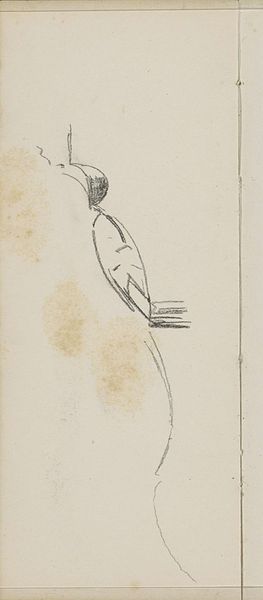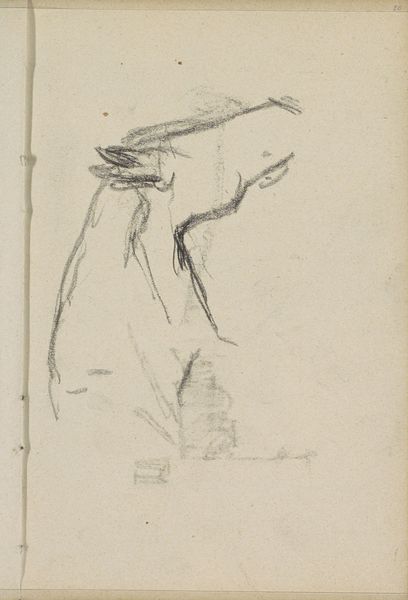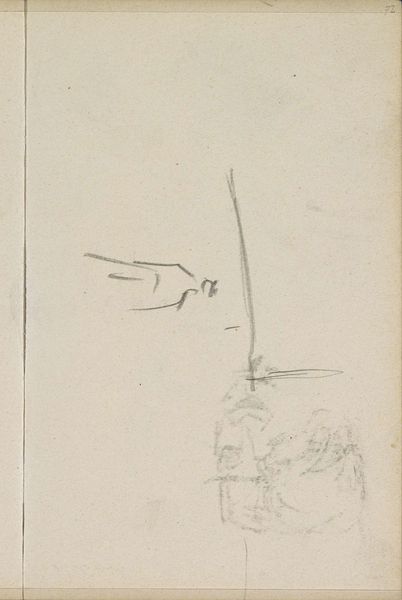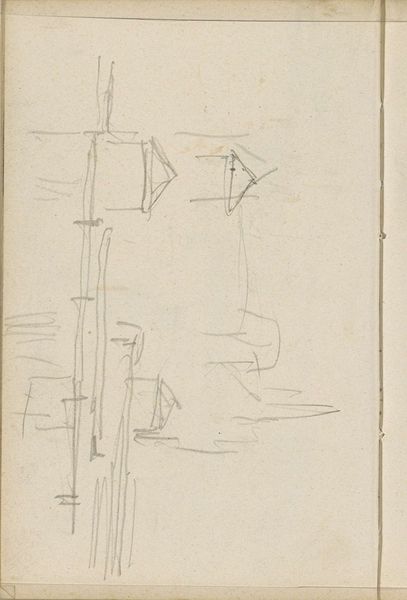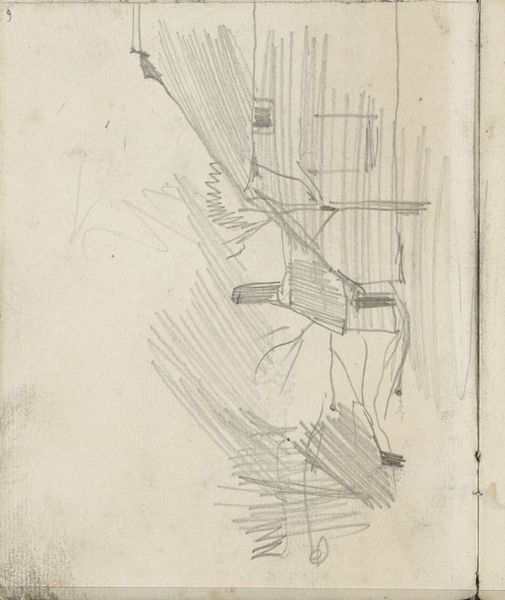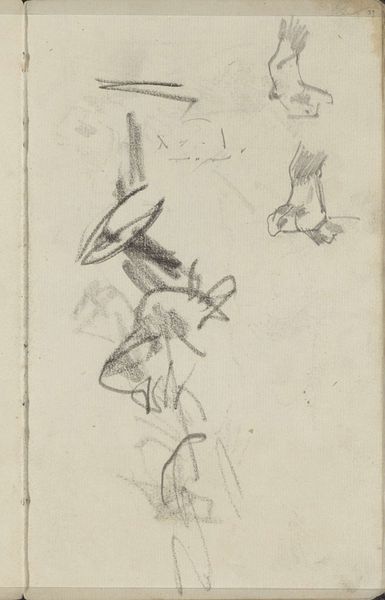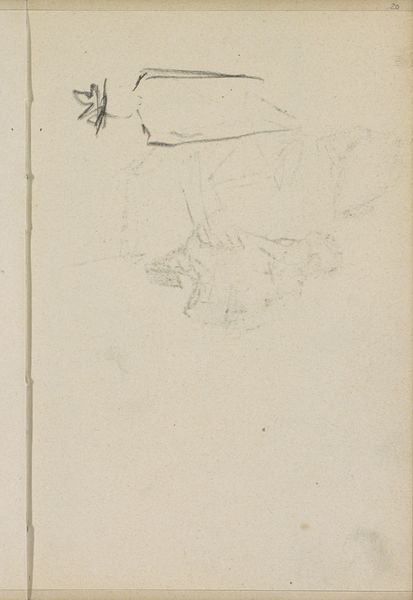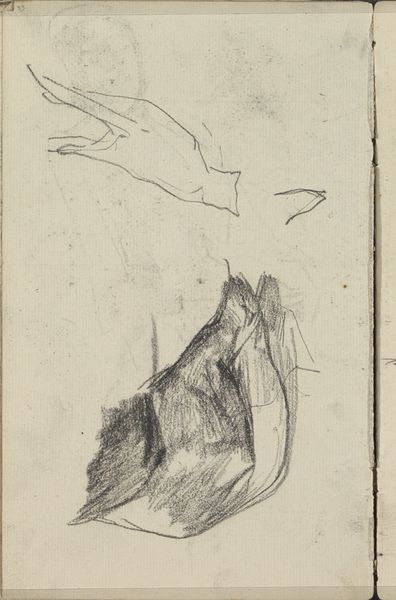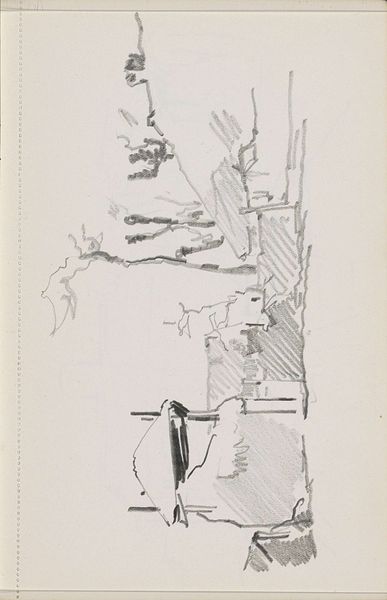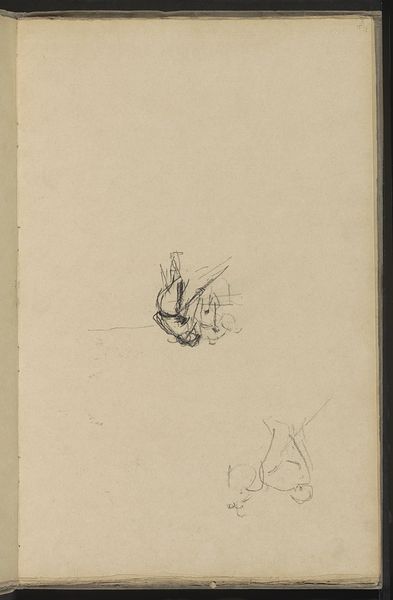
Gezicht in Amsterdam en een paardenhals Possibly 1907 - 1911
0:00
0:00
georgehendrikbreitner
Rijksmuseum
drawing, pencil
#
drawing
#
pencil sketch
#
figuration
#
pencil
#
horse
#
line
Copyright: Rijks Museum: Open Domain
Curator: Breitner’s “View in Amsterdam and a Horse’s Neck,” likely from 1907 to 1911 and held here at the Rijksmuseum, offers us an interesting look into his process. It’s a drawing executed in pencil. Editor: Well, it certainly *feels* immediate. There's something wonderfully incomplete about it. The horse’s neck arches so elegantly, even in its unfinished state. What did he intend here? Curator: It appears to be an exploration of form, particularly as it relates to the urban environment and working animals. Consider how industrialization reshaped the relationship between people, animals, and the urban space, Breitner using that very contrast here. Editor: Yes, the industrial echoes are strong. And yet, I also see a sense of tenderness here. A rough sketch, yes, but still so full of feeling for the animal's strength and vulnerability within this cityscape, which is interesting, no? It reminds us these creatures were integral parts of the day to day life in cities at the turn of the century. Curator: Precisely. Breitner wasn't simply interested in documenting; he engaged with the very mechanics of seeing, challenging what subjects were considered worthy. The roughness reflects the unglamorous realities of working life. Editor: There’s also something intriguing about the medium, pencil on paper, which makes it feel more like a study. Curator: Indeed. Breitner's use of this accessible and unassuming medium underscores his departure from academic formality. The very materiality of the sketch questions high versus low art distinctions. Editor: So true. It does leave you with a sense of wonder, what Breitner truly thought about his role as artist, citizen, chronicler…It also provokes thought about who decides what has significance and how society itself creates meaning through observation, even a century later! Curator: Ultimately, “View in Amsterdam and a Horse’s Neck” isn’t just a depiction; it is also evidence of an ongoing inquiry, of process, both artistic and industrial. Editor: Exactly. It’s a poignant glimpse into a world transformed by labor, industry and nature, leaving a whisper of both wonder and melancholy in its wake.
Comments
No comments
Be the first to comment and join the conversation on the ultimate creative platform.
